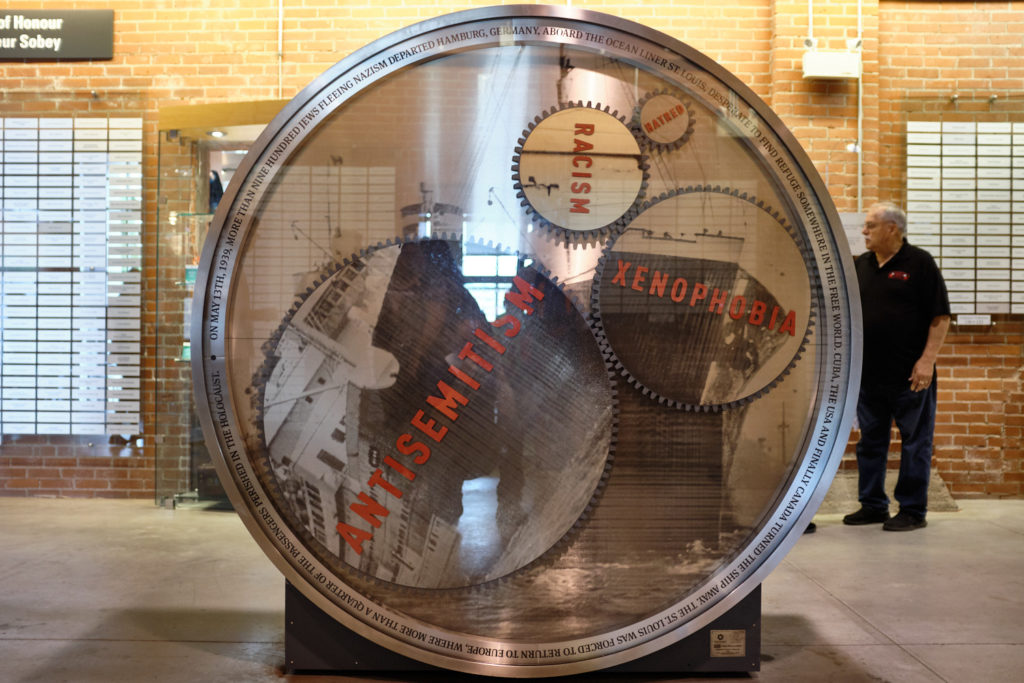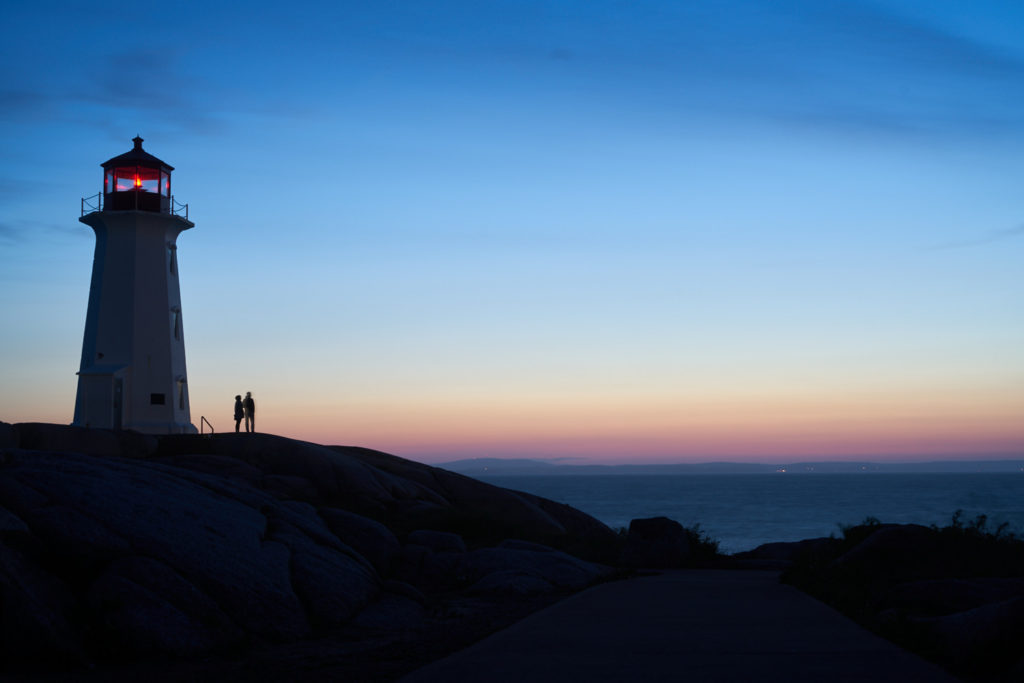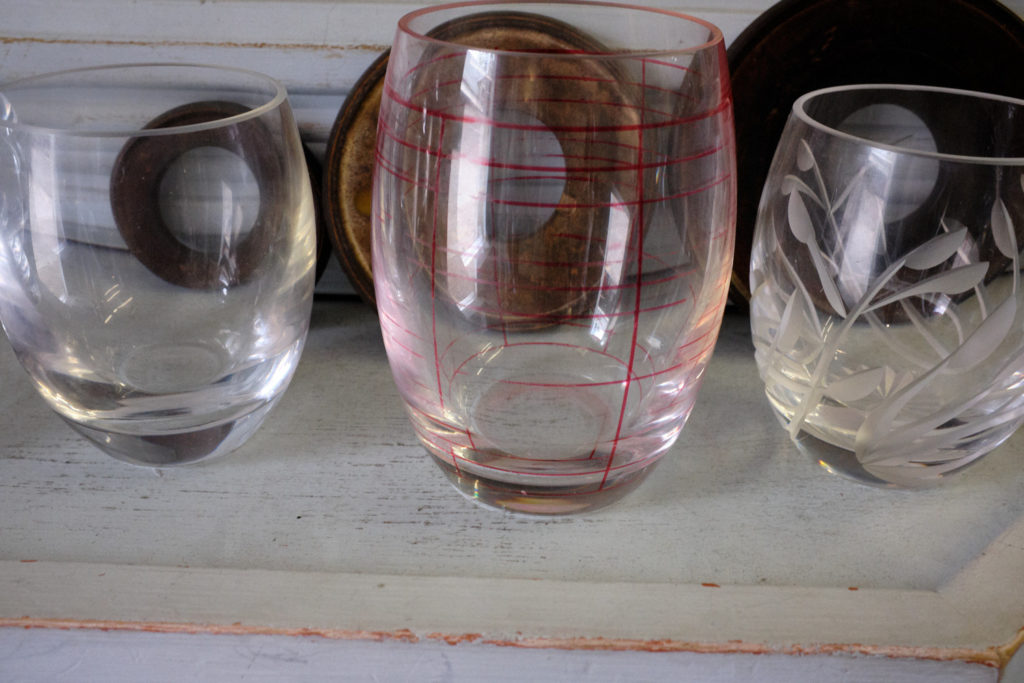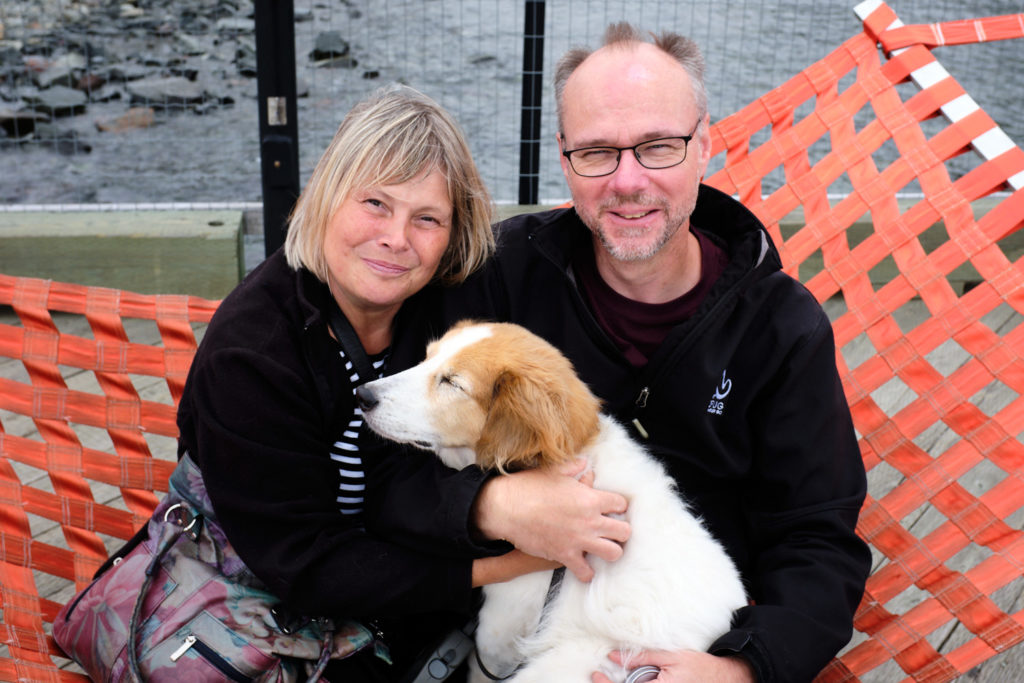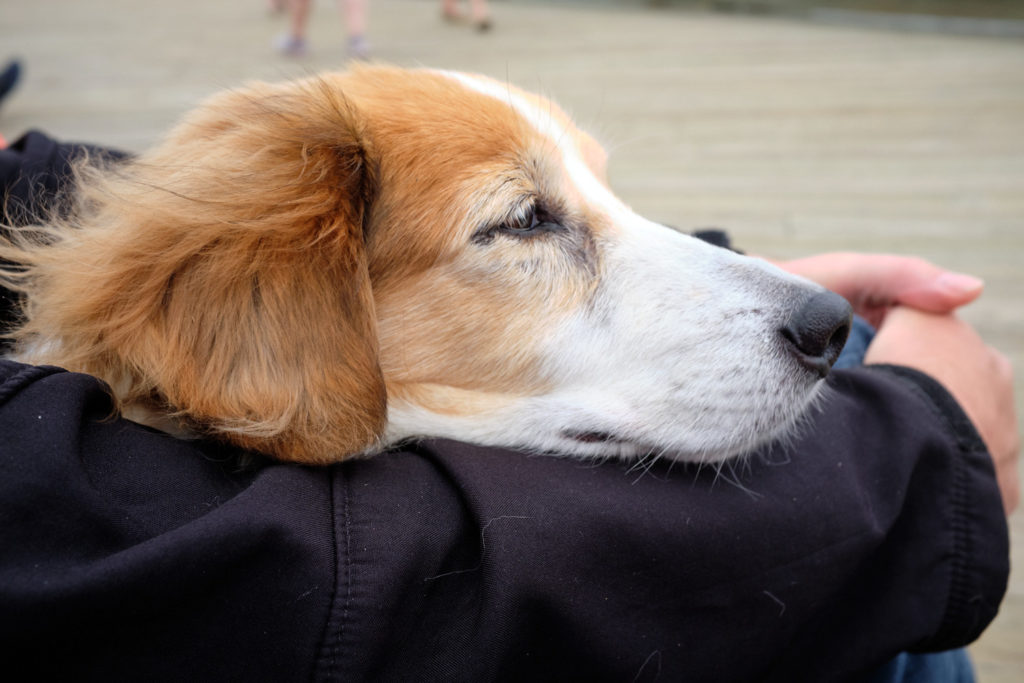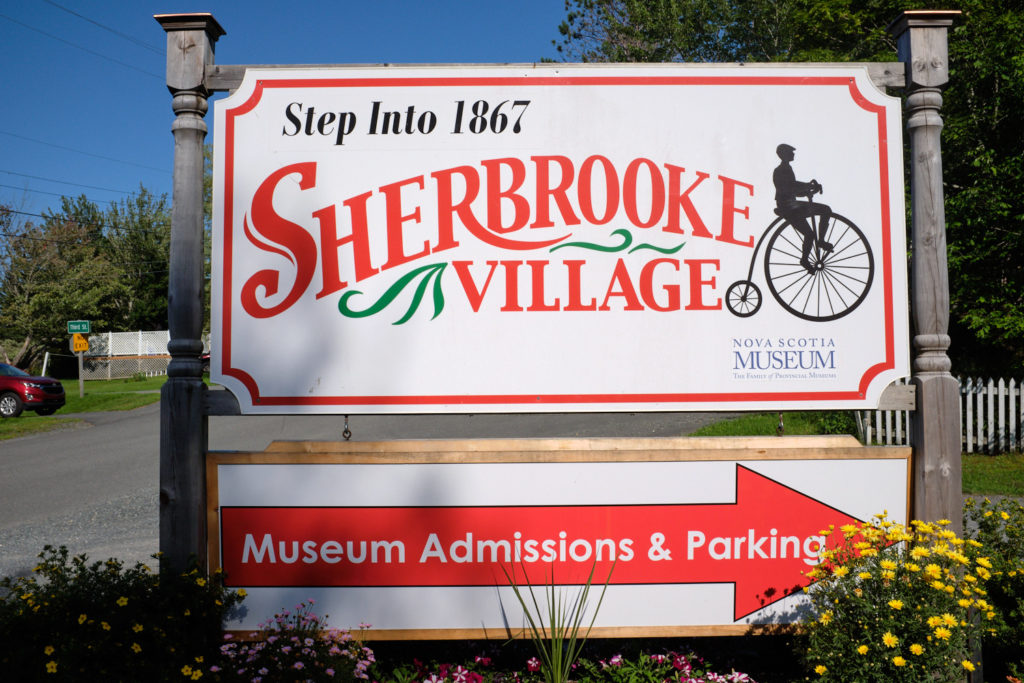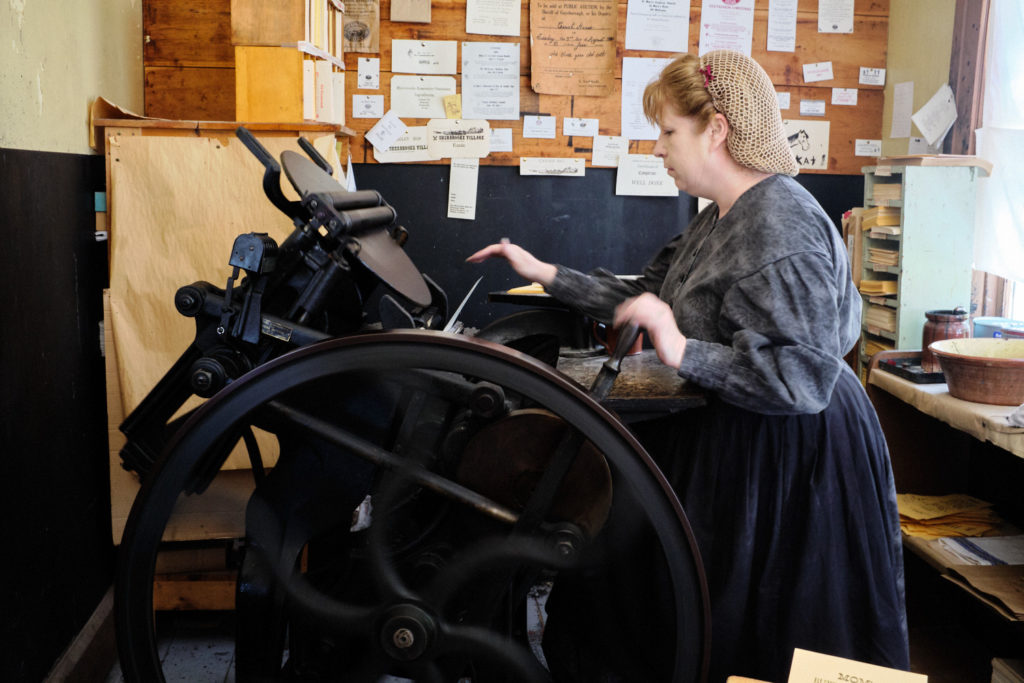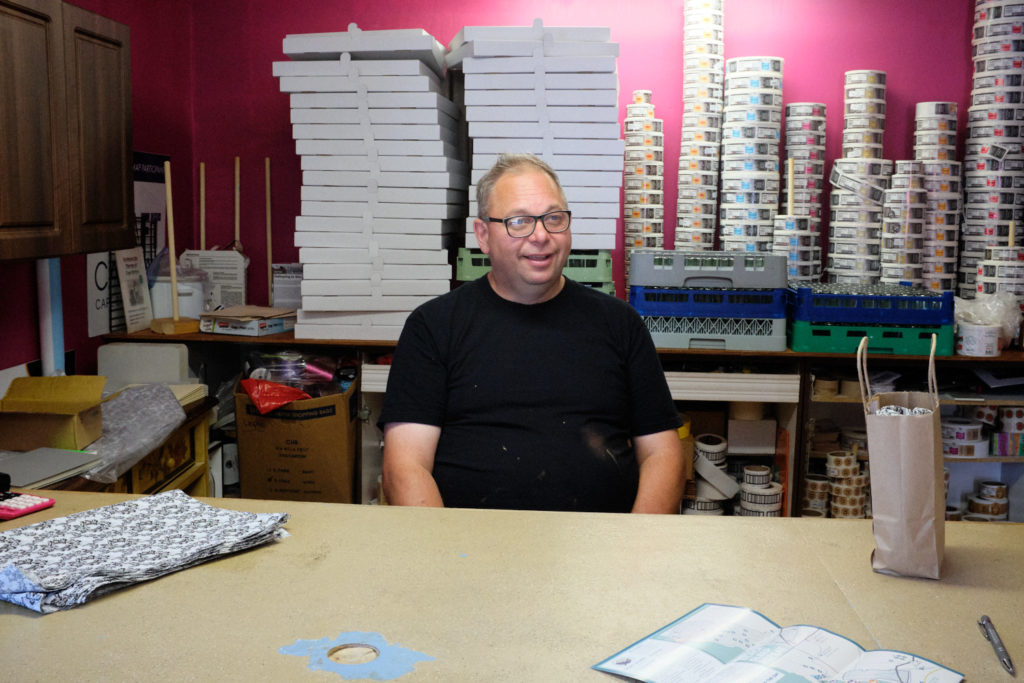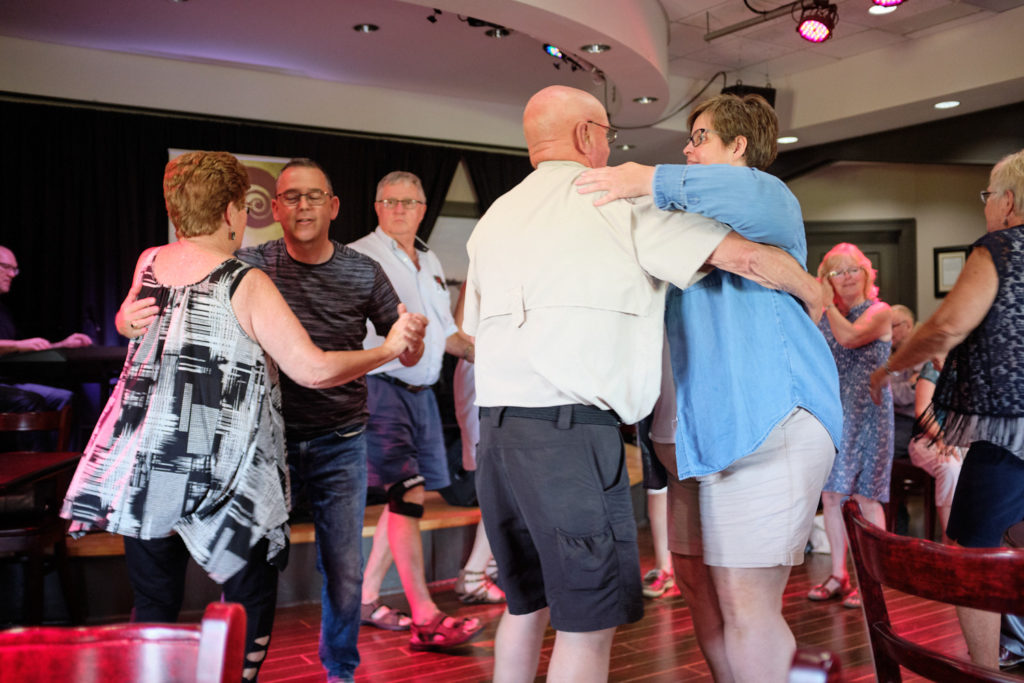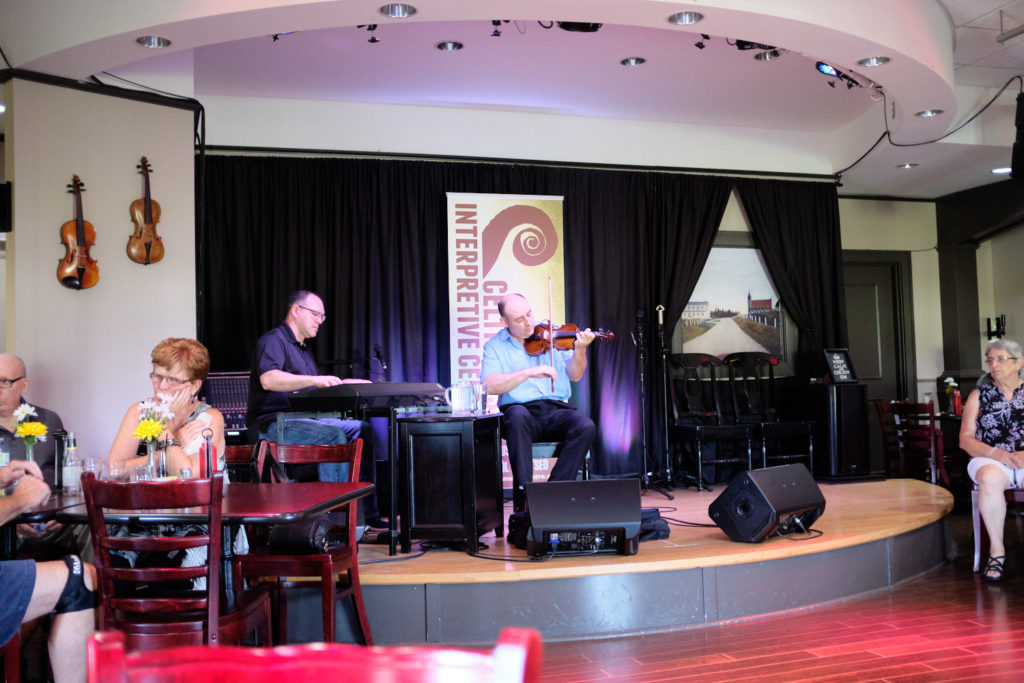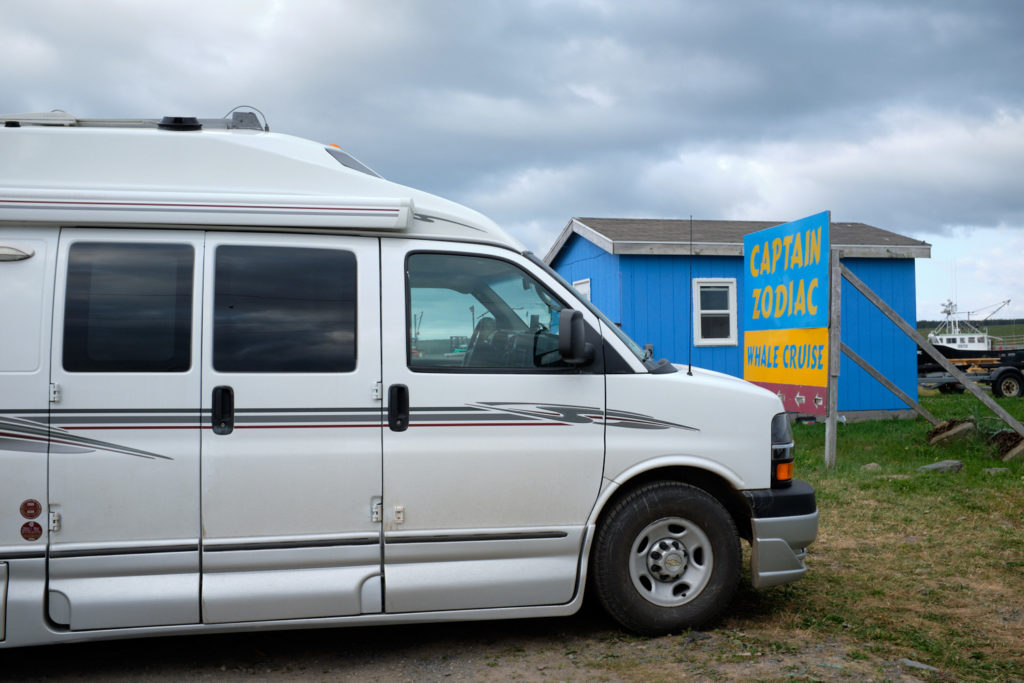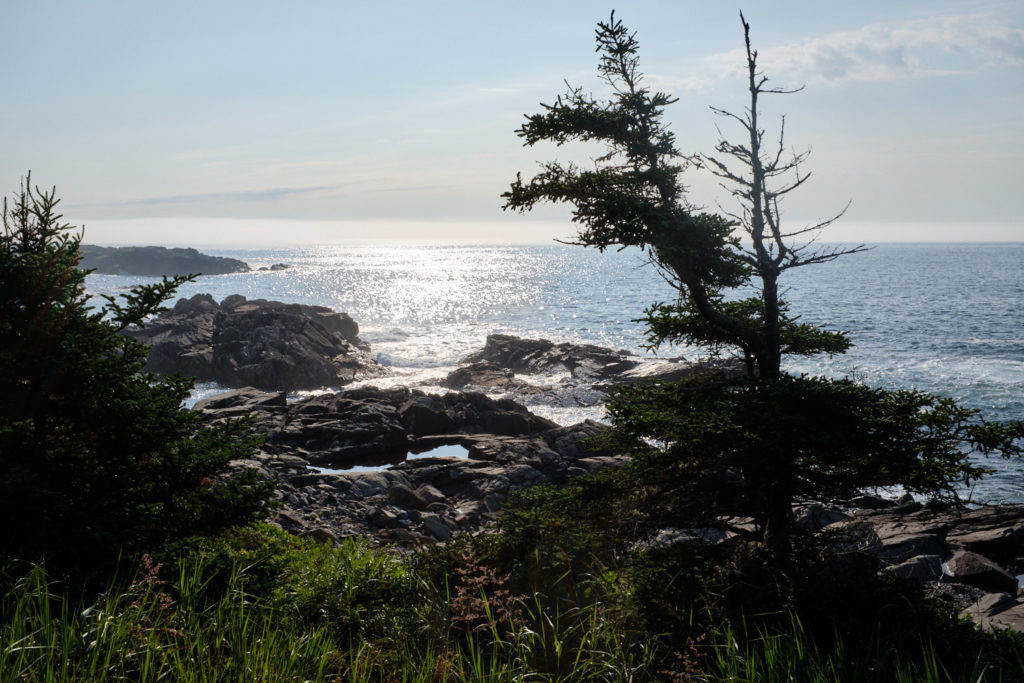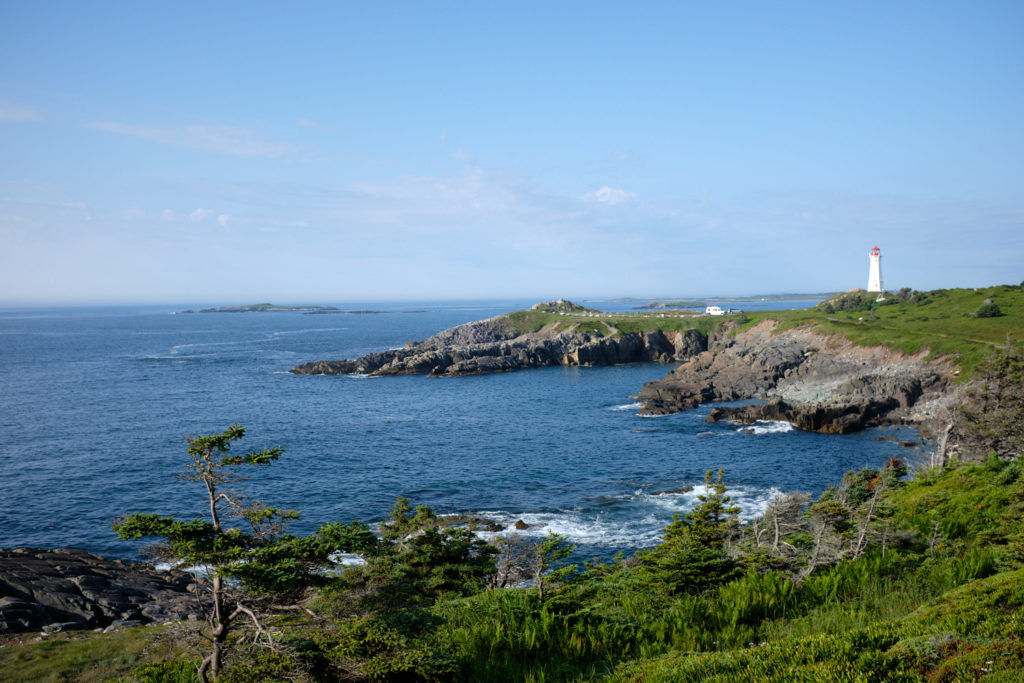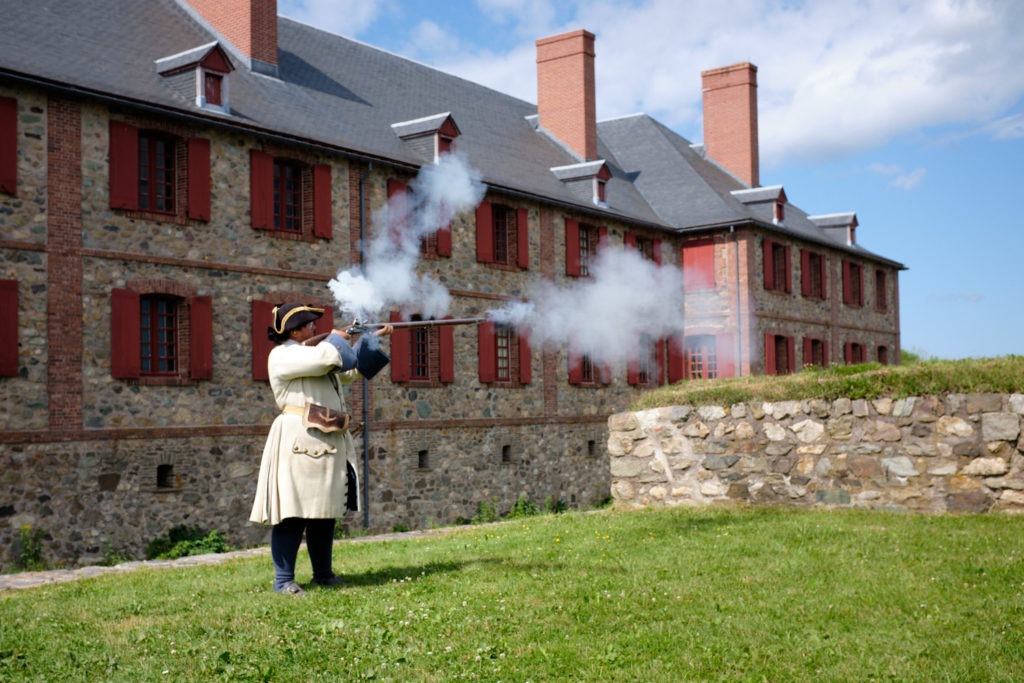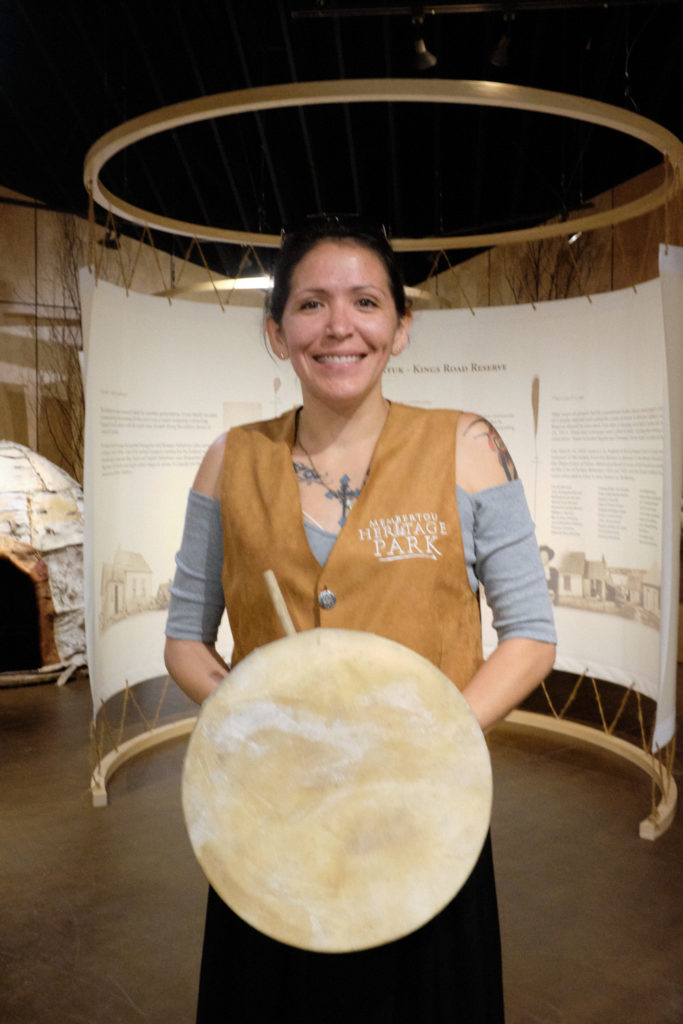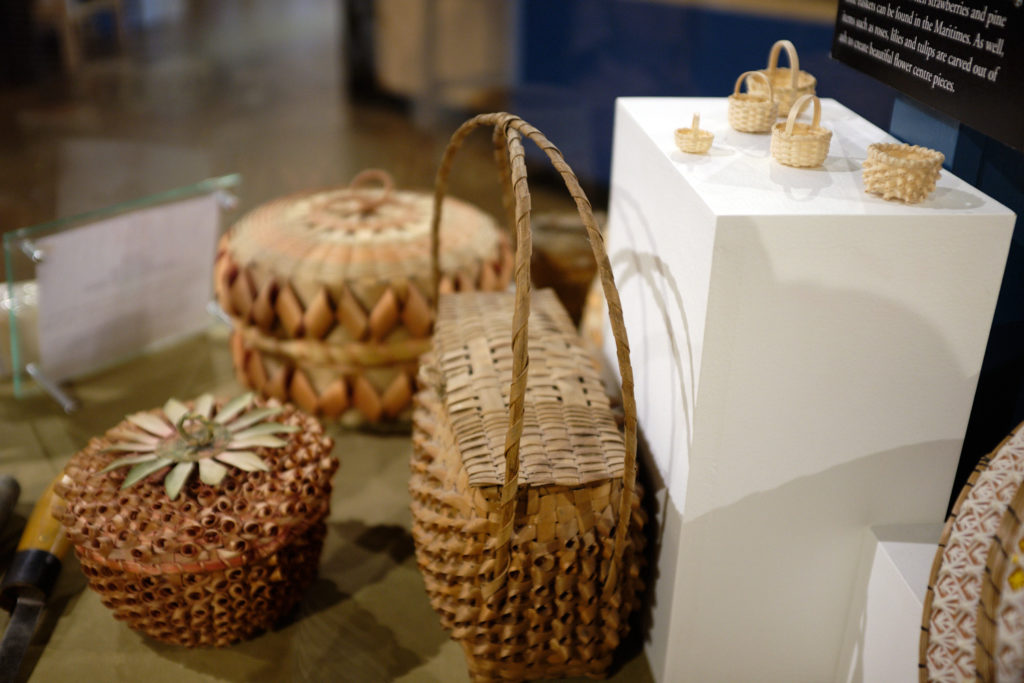We enjoyed our sleep in our overnight spot and had a mostly peaceful night except for the 5am visit by someone doing donuts in the parking lot. The view out of our van window showed the beautiful morning light.

At the information center, a somewhat inexperienced agent suggested a beach with a nearby lake where we could have an ocean swim followed by a lake swim to wash out the salt. The ocean part turned out to be really great, especially in the fog, although the water temperature was only about 16 degs C. The lake part, turned out to be a duck pond and the maintenance staff cutting the grass suggested it might not be a good idea to swim in that water.

Mahone Bay is a picturesque little town with lots of tourists on this beautiful sunny day. We visited a couple of stores and liked a store that had objects made of reclaimed wood. The Amos pewter factory and store is here and offered a more detailed demonstration of the pewter manufacturing process than the waterfront location in Halifax did.

We were extremely lucky to get the last spot at the Lunenburg city campground, right next to the main stage of the Folk Harbour Festival which took place from Friday to Sunday. We only had a 5 minute walk to the Lunenburg downtown area and visited a number of stores and art galleries.


There are a number of shipbuilding shops at the waterfront and we met a Lunenburg store owner who, in his spare time for the last two years, has been working on rebuilding his boat. He is optimistic that he will be done this year. He and his wife bought a property in Paros, Greece where they spend their winters. So jealous!
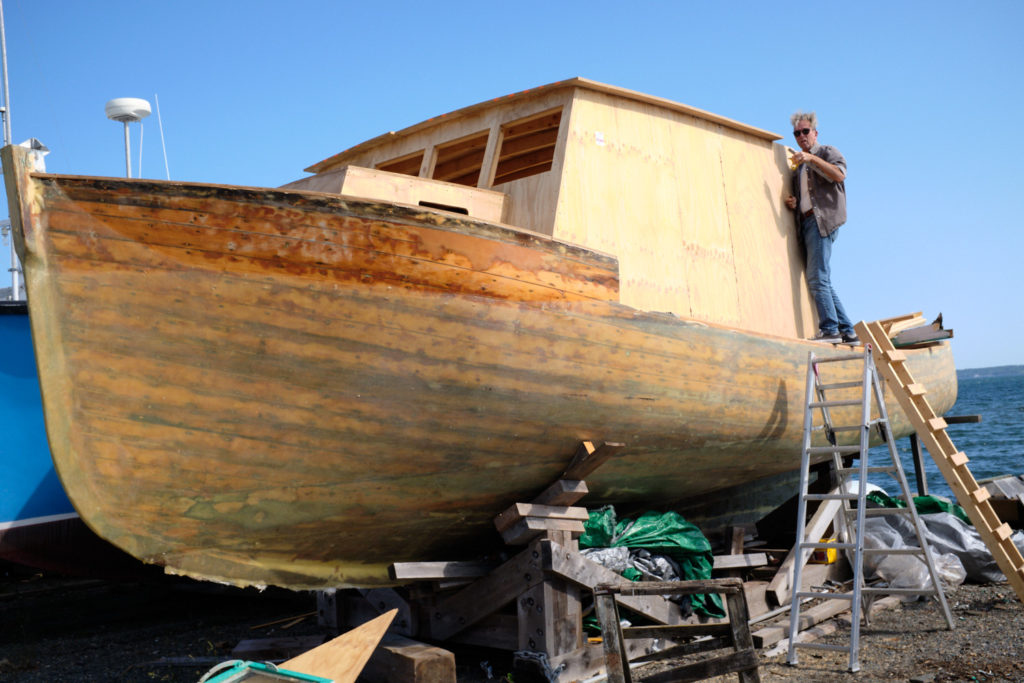
In the evening, after dinner, we attended the music festival with about 800 people and enjoyed some amazing performances by musicians from Canada and the US. We especially liked Keith Mullins, Dala, and the Amanda Jackson Trio.

It was a late but very enjoyable evening.





